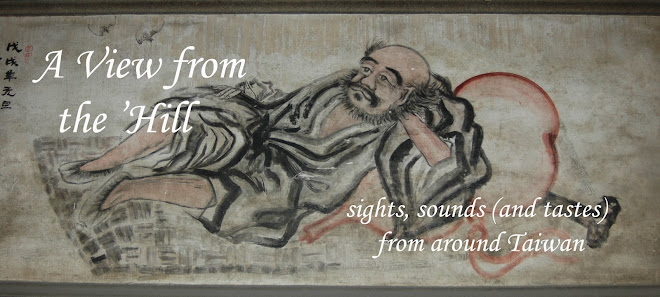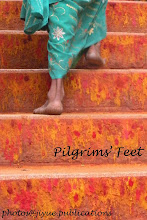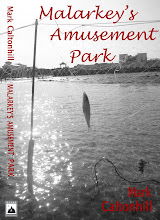 Chatting with the "Fifth Wang"
Chatting with the "Fifth Wang"
An Introduction to Chinese Calligraphy
By Mark Caltonhill
Photos / Fan Wen-zhen, Otto Huang

Song Dynasty calligraphy masterpieces were among the key exhibits shown when Taipei's National Palace Museum reopened after renovations last year. More than painting, more than sculpture, and certainly more than that modern upstart, photography, calligraphy represents the pinnacle of Chinese art. And Song Dynasty masters like Mi Fu and Su Dong-po, although they lived almost one thousand years ago, represent the pinnacle of that pinnacle.
Calligraphy is not a lost or ossified art form, however, as a visit to any county or city art gallery in Taiwan, or even to a summer night market or New Year spring-couplet writer's outdoor table, will testify. Calligraphy is alive, and it is everywhere. Nevertheless, it can be a difficult art for outsiders to understand.
Fortunately, help is at hand in the form of Wang Shih-I, one of Taiwan's top calligraphers, who recently had a rare retrospective exhibition of his work at the National Museum of History in Taipei.

In addition to learning calligraphy, initially from his father, Wang has studied Western literature at National Chengchi University, drama at Chinese Culture University's Graduate School of Art, drama in Greece, comparative drama and anthropology at Oxford, and East Asian art history in New York. He is now professor of drama at Chinese Culture University, where
Travel in Taiwan met with him recently.
TiT:How might foreign visitors to Taiwan who know nothing about calligraphy gain an understanding of this art form?
WSI:
In one sense, calligraphy is very abstract. It's just black ink on white paper, and the feeling that comes from the way the characters are written. But the calligrapher will find this feeling from the literal meaning of the words, so knowing what the words are and who wrote them is a good place to start. Even if the visitor doesn't read Chinese, he may gain such understanding through inquiry.
TiT:
Speaking of these texts, do you write your own poems and inscriptions, or do they come from classical texts or elsewhere?
WSI:
Both. If I write a poem, then I will certainly execute it in calligraphy. Sometimes I find inspiration in poems by other people, including classical, religious, or philosophical texts. Or I will see a work of calligraphy, such as the work of Mi Fu of the Song Dynasty, and maybe find it too weak, so I will do my version of it.
 TiT:
TiT:
If you find the famous Mi Fu too weak, where would you say your style fits into the millennia-long tradition of Chinese calligraphy?
WSI:
I started learning under my father as a child. By the time I was eight years old, my brush was vertical and my arm so horizontal you could balance a glass of water on it and I wouldn't spill a drop while writing. I had learned the two main traditions. The first emerged during the Han and Wei Dynasties, and was structurally proportionate and robust, like the national spirit of that time. It is characterized by "substance."
“By the time I was eight years old, my brush was vertical and my arm so horizontal you could
balance a glass of water on it”
During the later Tang Dynasty, this calligraphy was felt to be too pedantic, and under the influence of Wang Xi-zhi and his son Wang Xian-zhi, the "Two Wangs", a new style was developed, characterized by "elegance."
This was accepted as the pinnacle of calligraphy, imitated by the so-called great calligraphers of the Song Dynasty, such as Mi and Su, and there was almost zero innovation for the next millennium. Finally, in about 1790 during the Qing Dynasty, some calligraphers, including two more influential "Wangs," blamed the nation's deterioration on the "weakness" of the elegant Tang style and staged an artistic rebellion.
Rather than leading to innovation, however, this rebellion merely led to a reversion to the earlier Han-Wei style, and then to two centuries of competition between the two forms. Both were essentially imitations, attempts to copy earlier techniques.
I was the first to seek a combination of the two, rather than a fight between them. And by the age of twenty-seven, I had created a new style based on my own disposition and the age in which I lived. As they say, "No one is in discord with his own time." I became nicknamed the "Fifth Wang."
 TiT:
TiT:How was your father's calligraphy?
WSI:
It was very good. My father lived during the early republican period when China was divided and weak, and so he favored the more robust Han style. From that period I particularly like the calligraphy of Sun Yat-sen. His was robust too, but it was also gentle.
TiT:
How about the calligraphy of Mao Tse-tung?
WSI:He was a wildcat.
TiT:
How would you describe your creative process, your creative impulses?
WSI:
First, I don't watch television or movies, and I don't play cards, that kind of thing. I just read, write, and do calligraphy. Even if I'm tired or a little drunk, those are creative inputs too. Doing calligraphy gives me a mental happiness I cannot get elsewhere.
Second is my mother. We came from a poor background, and I liked to give my calligraphy to my mother as a gift, since it gave her great pleasure. Even though she is now deceased I still think of giving it to her. Even with the bad ones I don't keep, when I burn them I think of my mother's spirit seeing them.
“Doing calligraphy gives me a mental
happiness I cannot get elsewhere”
TiT:
Do you paint too, and if so, how is the painting process different from that of calligraphy?
WSI:
Painting is okay, but calligraphy gives me more pleasure. Each stroke is the creation of a second, less than a second, and cannot be changed. With painting one can go back and change it or add something; with calligraphy one has to let go of everything. It's like Zen; one has to ignore the world, find inner calm. It doesn't come from the hand but from the mind.
 TiT:
TiT:
You mentioned Zen; is Buddhism an important influence in your work?
WSI:In my study I have just two figurines. One is of Confucius, because I am not a Buddhist or a Daoist. I belong to the Confucian school. The other is of Aristotle, whose writings I have studied my whole life and have translated into Chinese.
Nevertheless, Buddhism has taught me the importance of living in the moment, and I often use works by Daoists such as Laozi and Zhuangzi in my calligraphy. Of the poets, I use works by Li Bai, Du Fu, Tao Yuan-ming, Su Dong-po, and ... my own.
TiT:
Some of your work seems humorous, if not outright cheeky. Is there humor in calligraphy?
WSI (grinning): No. None at all.
.jpg)


















